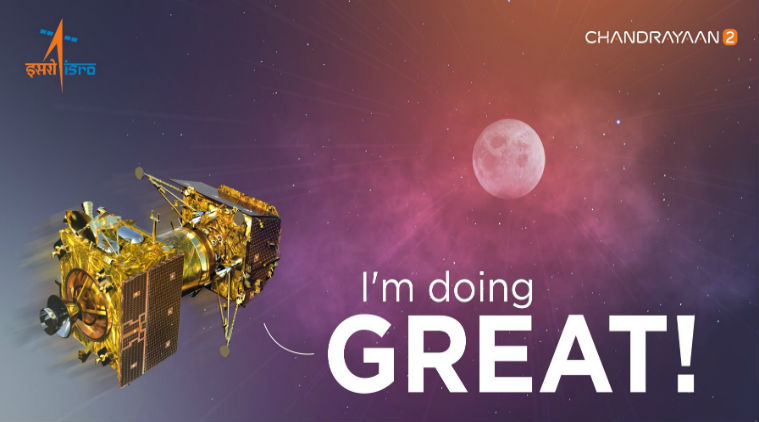
ISRO’s Chandrayaan-2 successfully entered into the orbit of the Moon today at 9.02 am. In a statement, India’s space agency said that the Lunar Orbit Insertion or LOI maneuver was completed successfully using the onboard propulsion system.
The maneuver’s duration was around 1738 seconds. Chandrayaan-2 achieved the orbit of 114 km x 18072 km. After this, series of orbit maneuvers will be performed on Chandrayaan-2 spacecraft to enable it to enter its final orbit passing over the lunar poles at a distance of about 100 km from the Moon’s surface.
Also Read | Chandrayaan 2 LIVE updates
After this, the Vikram lander will separate from the Orbiter and enter into a 100 km X 30 km orbit around the Moon. The Vikram lander will carry out a series of complex braking maneuvers to soft land in the South polar region of the Moon on September 7, 2019, said ISRO in its press statement. All the systems of Chandrayaan-2 are healthy, said the space agency.
“The health of the spacecraft is being continuously monitored from the Mission Operations Complex (MOX) at ISRO Telemetry, Tracking and Command Network (ISTRAC) in Bengaluru with support from Indian Deep Space Network (IDSN) antennas at Bylalu, near Bengaluru,” ISRO said.
The next Lunar bound orbit maneuver is scheduled tomorrow for August 21, 2019, between 1230-13:30 hrs IST. There will be four more orbit manoeuvres, which will take the Chandrayaan-2 spacecraft into its final orbit of the Moon. This process of manoeuvering in the lunar orbit will be taking place from August 21 to September 1.
The Vikram lander will make the soft landing on the moon after going through two more orbit manoeuvers before its powered descent for landing on the surface of the moon. With the help of Vikram lander, ISRO will be landing on the lunar explorer on the south pole of the Moon.
This region of the Moon continues to be unexplored so far. According to an ISRO statement, the south pole of the Moon is especially interesting because the lunar surface area of this region remains in shadow for much longer than that at the north pole. ‘The Chandrayaan-2 mission will look for the presence of water in these areas.
Once the Vikram lander successfully lands on the surface of the Moon, the Pragyan rover will start with the exploration. This rover is a six-wheeled, AI-powered vehicle, that will be collecting the data from the surface of the Moon. The Pragyan rover has two primary instruments. The Lander and Rover are designed to work for 14 days, which is called one lunar day.
If the landing is successful, the Chandrayaan-2 mission will make India the fourth country in the world after Russia, the US and China to successfully do a soft landing on the surface of the Moon. India’s previous Moon mission Chandrayaan-1 had a hard landing on Moon’s surface.
India’s ambitious second moon mission took off last month on July 22 from Indian Space Research Organisation’s (ISRO) Sriharikota launch range on the GSLV MK-III rocket, after which it went through a series of orbit-raising manoeuvers on the Earth’s orbit. The spacecraft progressed five times on the Earth’s orbit from July 23 to August 6 before it left the blue planet’s orbit last week when the final orbit-raising was done.